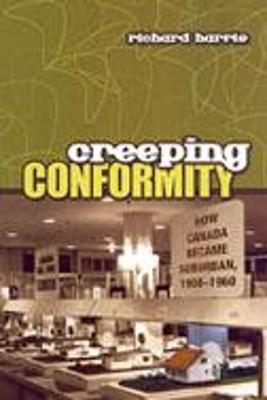Creeping Conformity, the first history of suburbanization in Canada, provides a geographical perspective – both physical and social – on Canada's suburban past. Shaped by internal and external migration, decentralization of employment, and increased use of the streetcar and then the automobile, the rise of the suburb held great social promise, reflecting the aspirations of Canadian families for more domestic space and home ownership.
After 1945 however, the suburbs became stereotyped as generic, physically standardized, and socially conformist places. By 1960, they had grown further away – physically and culturally – from their respective parent cities, and brought unanticipated social and environmental consequences. Government intervention also played a key role, encouraging mortgage indebtedness, amortization, and building and subdivision regulations to become the suburban norm. Suburban homes became less affordable and more standardized, and for the first time, Canadian commentators began to speak disdainfully of 'the suburbs,' or simply 'suburbia.' Creeping Conformity traces how these perceptions emerged to reflect a new suburban reality.
- ISBN10 0802035566
- ISBN13 9780802035561
- Publish Date 16 June 2004 (first published 8 June 2004)
- Publish Status Active
- Publish Country CA
- Imprint University of Toronto Press
- Format Hardcover
- Pages 160
- Language English
